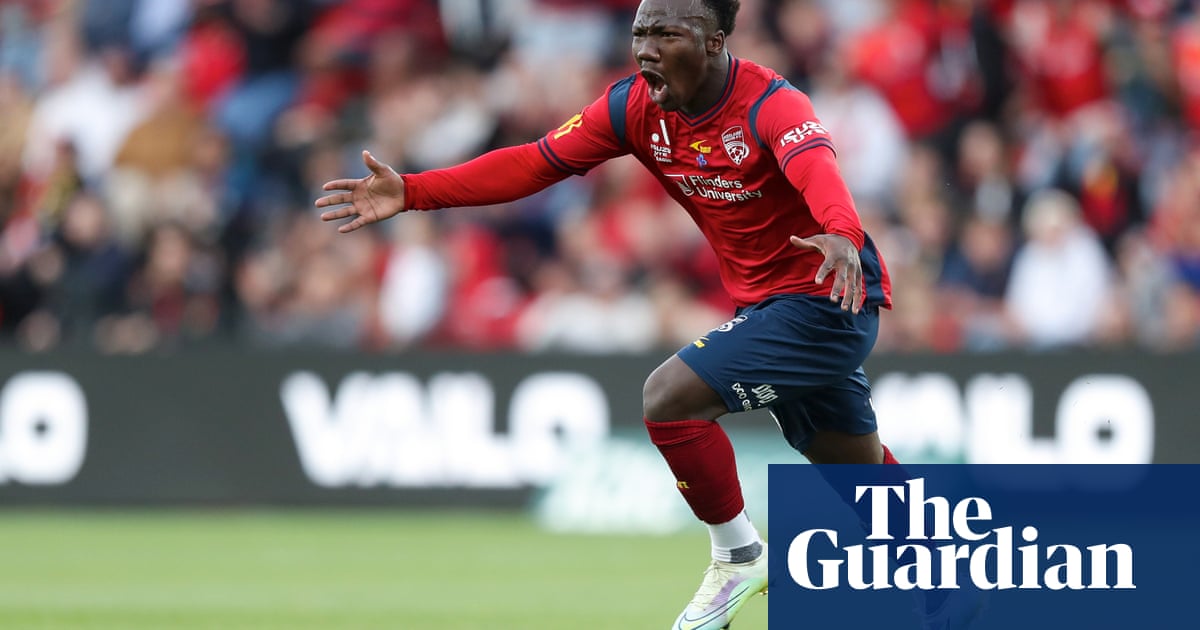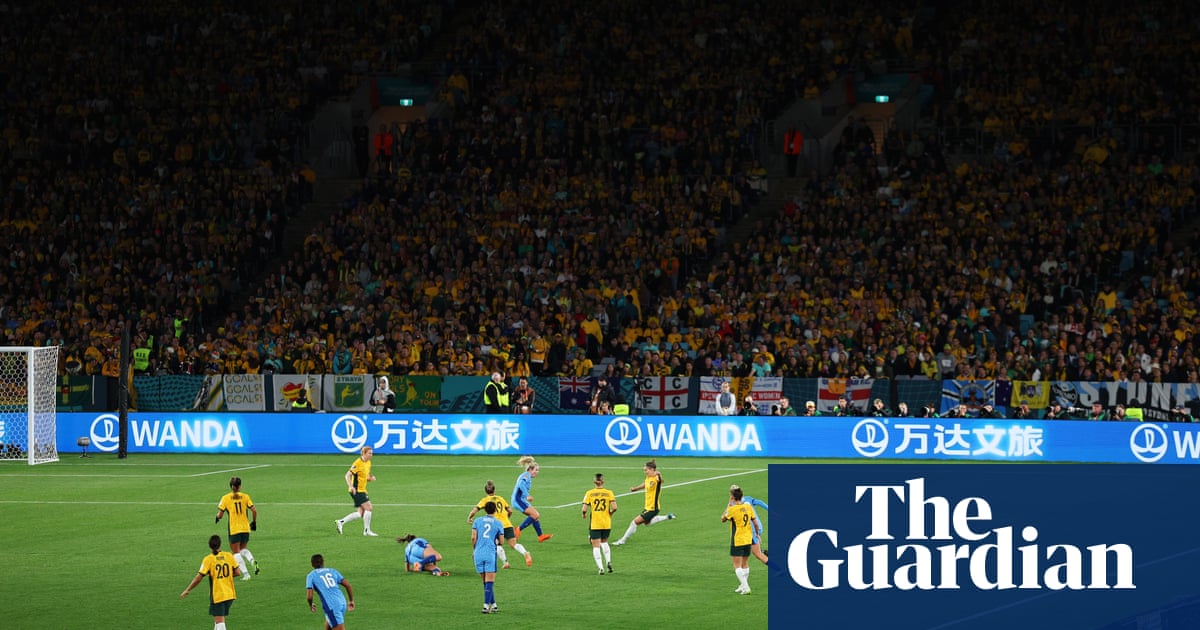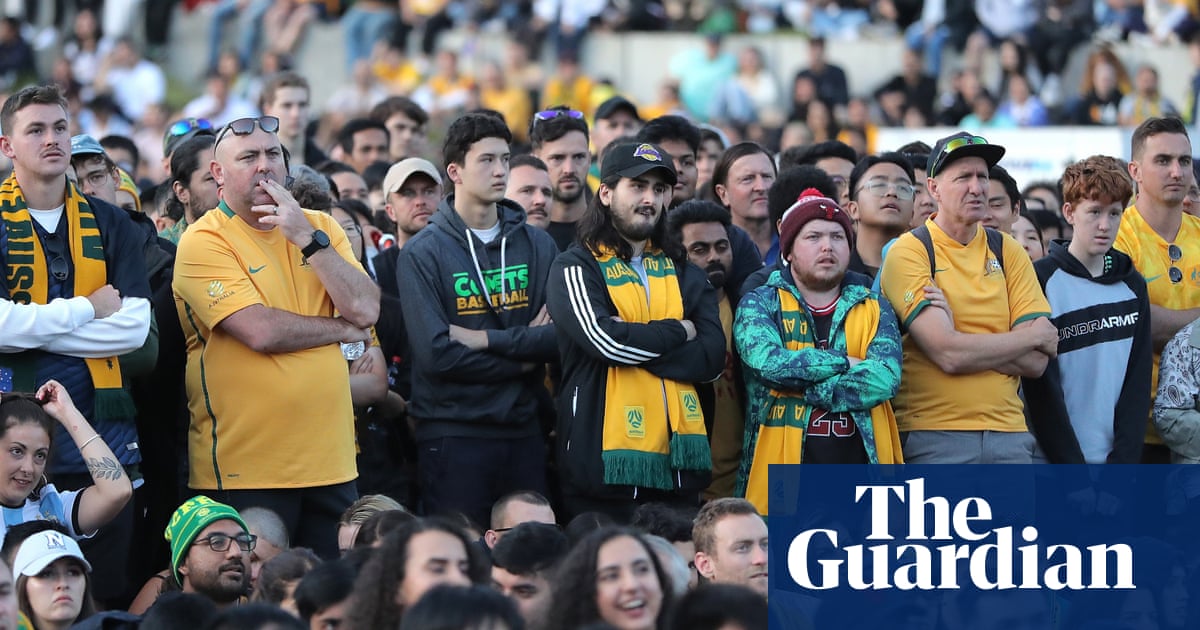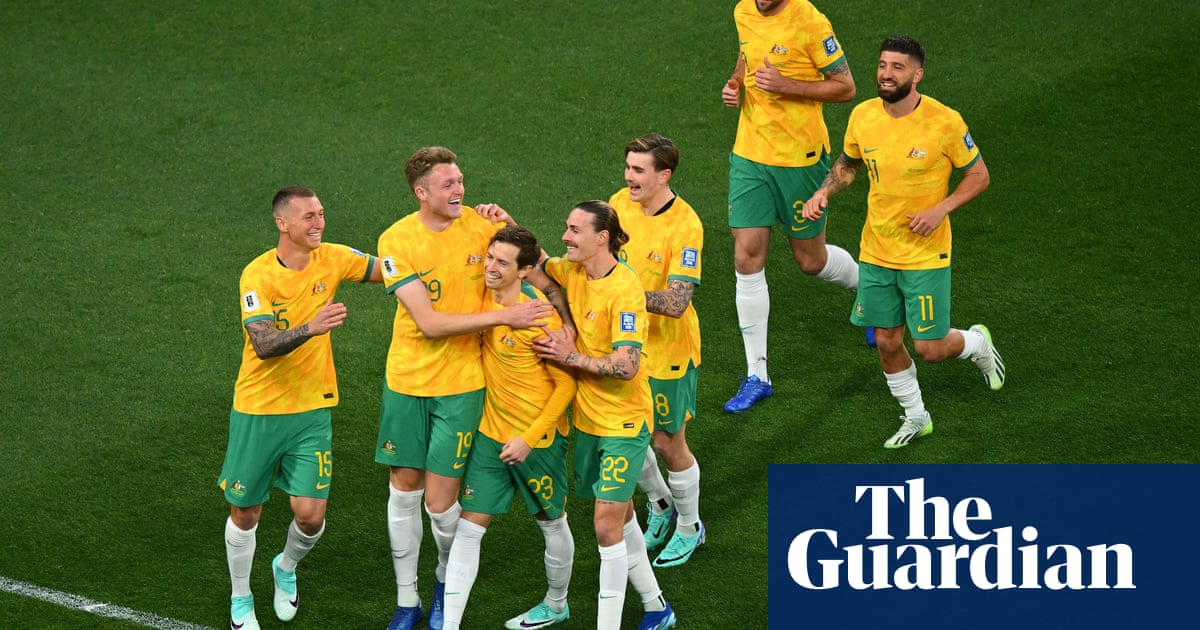
Teenage phenomenon Nestory Irankunda and his school-age Adelaide United teammates have emerged as a symbol for the new marquee-free A-League Men, as it throws all its effort into becoming a factory for world football.
ALM attendances are recovering from the lows of the pandemic but the direction of the league – tested by spectator misbehaviour, divisive administrative decisions and a lack of high-profile imports – is in flux. In this climate, opportunity in men’s domestic football has been mostly overlooked next to the explosion of popularity around the Matildas.
International sports consultant Nick Garcia landed in this environment when he became A-Leagues commissioner this year. “The first question you’ve got to ask yourself is what sort of league are we, right?” he says. Although he has had just months in the job, Garcia wants to share his vision. “We want to be known as a production line for international success.”
On the steps of world football’s grand pyramid, the A-League has struggled to find a footing. But Garcia believes Australia’s stable society, advanced sport science and English language means the ALM can be a league known for developing young players for clubs in Europe, thereby generating revenue for clubs, and spinning the wheels of local investment as well as fan excitement.
It’s a long way from the A-League’s traditions, where millions of dollars of annual losses were met by wealthy club owners gambling on the white whale of Australian sport: a local football league to compete with the likes of the AFL and NRL.
“What I think you need is sustainable clubs that can be successful and play exciting football,” Garcia says. “While it is very nice to have a billionaire behind that, especially if they’re investing in growth, I think we need to get to a point where consortiums that are good business people that care about the community and know how to engage it, can own clubs that can go on to be successful.”
Adelaide United, alongside last year’s premiers Central Coast Mariners, have become the model of Garcia’s vision. In last week’s 6-0 victory over heavyweights Melbourne City, the Reds fielded six teenagers, three of whom scored.
Adelaide chief executive Nathan Kosmina says “the evolution of the identity” of the league has changed since he became CEO in 2017. Cashed-up clubs in China and West Asia started to compete for established professionals that a decade ago might have joined the A-League.
His club has formally been pursuing what he describes as a “youth project” since 2020, but not without opposition. “Not that fans weren’t accepting of it, but there was still a want for a higher-priced, high-profile striker that you build the squad around, and that puts the bums on seats.” he says.
The side has reached the final four every year since then, but last weekend was the boldest vindication of the club’s direction. More than 10,000 home fans witnessed a 6-0 victory ignited by the 14th-minute free-kick by 17-year-old Irankunda.
Such is the buzz about the Tanzanian-Australian, he is tipped to make the move overseas next year once he turns 18. But his path to the starting side only opened when Socceroo Craig Goodwin departed in the off-season for the Saudi Pro League.
Whereas the league attracted global attention when the likes of Dwight Yorke and Alessandro Del Piero took the field, there is not a single marquee player supported by head office this season (although some players have still been signed outside the salary cap).
The declining role of established players has helped opened the door for Irankunda and the rest of the next generation. The Central Coast Mariners fielded the youngest team in the league, yet still secured the championship in June.
Fifty-six per cent of players who made an appearance last season were aged 25 or under in round one, up from 35% 2017-18, according to research by Professional Footballers Australia. At the same time, the share of players coming off contract dropped below half, down from 68% in 2020-21.
Transfer dynamics are driving these trends. If a young player moves from the A-League to the Premier League when he is out of contract, the fee is based on Fifa’s scheme of training compensation, capped at 90,000 euros for each year they spent at the club. In that situation, an Australian club might be lucky to receive $300,000. But if a player is under contract, not only can the club negotiate a higher transfer fee, they can include a sell-on clause, allowing them to receive a cut of subsequent transfer.
High-profile moves for young Australians such as Jordan Bos and Marco Tilio – both of whom attracted more than $2m – helped drive more than $10m in transfer revenue in the last window, double the previous best.
Co-chief executive of PFA, Beau Busch, says players enjoy the stability of longer term contracts and increasing opportunity for young players has been a goal in bargaining. But he believes the league needs to establish a strong fan base and develop young talent at the same time. Doing so won’t be easy. “The challenge now for the clubs is deeply connecting with football fans across the country,” Busch says.
Kosmina knows that youth won’t always mean success, and losses drive fans away. “Now, you can protect against that to a degree if you play good football and it’s entertaining and and you’re competitive. But ultimately, I’ve always said that the biggest health metric for the league is bums on seats in stadium.”
Garcia is aware the approach is not without risk. “That connection with the club is what’s going to make or break this,” he says. “I honestly don’t think it’s about Del Piero. I think it’s about a sense of belonging, being part of a community, being part of a club, and seeing local talent come through and go on to do great things.”












